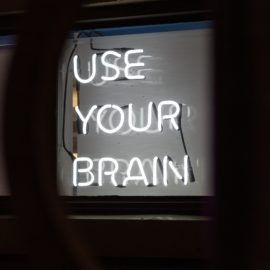

This article is an excerpt from the Shortform book guide to "What Every Body Is Saying" by Joe Navarro and Marvin Karlins. Shortform has the world's best summaries and analyses of books you should be reading.
Like this article? Sign up for a free trial here.
What role does body language play in communication? How can you get better at decoding people’s body language?
Our bodies convey our emotions and intentions far faster and more accurately than our words. We pick up on body language cues instinctively because they have been wired into us over millions of years of evolution.
Keep reading to learn about the role of body language in communication.
Why Your Body Doesn’t Lie
Body language cues are more accurate indicators of a person’s emotions than their words. This is because we’ve developed immediate and automatic physical responses to stimuli in our environments throughout our evolutionary history. In response to many things, whether it be a cute puppy or a rude coworker, our bodies react more quickly than our conscious thoughts do, making those reactions honest reflections of how we feel.
(Shortform note: In Emotional Intelligence, Daniel Goleman refers to these automatic responses as “emotional hijackings.” He provides additional insight into the role of body language in communication and why body language cues are so honest, explaining that we automatically judge whether anything we see is good or bad within milliseconds. He adds that even when you briefly glimpse a photo of something you’re scared of, your body starts to activate its threat response and immediately initiates physical reactions like sweating.)
The Limbic System Controls Your Body’s Reactions
The part of your brain that controls these automatic emotional responses is called the limbic system. Over thousands of years of evolution, the limbic system’s main function has been to keep us alive, governing our instinctive behaviors to avoid harm (like stressful situations) and seek out things that are beneficial to our survival, like shelter. To do this, the limbic system has three consistent and automatic responses to danger: freeze, flight, and fight.
(Shortform note: What exactly happens in your brain when you perceive a threat? According to Bessel van der Kolk in The Body Keeps the Score, your brain transmits all of the sensory information you perceive to two parts of your brain: the amygdala and the frontal lobes. First, your amygdala receives this information and quickly assesses whether it’s a threat. If it identifies a threat, it automatically signals your body to release stress hormones to prepare your body to react. Then, only after the sensory information reaches your frontal lobes does your conscious thinking kick in, allowing you to rationally assess the situation.)
According to Navarro, the secret to decoding body language is learning what physical behaviors are associated with these three limbic responses. After years of evolution, these reactions are strong and hard to suppress, making them noticeable and reliable cues that can indicate a person’s true feelings. Let’s look at each response and why we have it.
- Freeze—Your body’s first automatic response to something threatening is to freeze. This is because movement attracts attention and holding still helps you avoid being noticed. Restricted movement, then, indicates someone is feeling threatened or uncomfortable.
- Flight—Your next limbic response is to run or physically distance yourself from the threat. Subconscious distancing, then, also indicates discomfort.
- Fight—The last limbic response to a threat is to confront it directly. The body will prepare itself for conflict through aggressive behaviors such as puffing out your chest.

———End of Preview———
Like what you just read? Read the rest of the world's best book summary and analysis of Joe Navarro and Marvin Karlins's "What Every Body Is Saying" at Shortform.
Here's what you'll find in our full What Every Body Is Saying summary:
- A guide from a former FBI agent on how to decipher body language
- How to master the language of nonverbal communication
- How to detect when someone is lying to you and access their true thoughts






